A Living Building
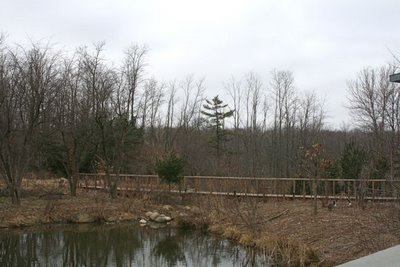
The Lab of Ornithology appears to me to have been designed around two major aesthetic concerns. First, the trove of bird art, like that in the Fuertes library and the Fisher’s Island panel, which have been beautifully integrated into the space. A second goal was to showcase the natural wonders in the wetlands just outside, visible through huge windows all around. It’s like the biggest blind you’ve ever seen.
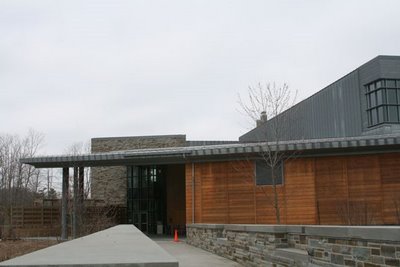 Though my time was limited, I was determined to take in just a bit of the gorgeous swampy bit of Sapsucker Woods immediately around the building. It’s truly another world, quiet, laced with mulched paths, swarming with birds. Canada geese were living their lives, getting it on,
Though my time was limited, I was determined to take in just a bit of the gorgeous swampy bit of Sapsucker Woods immediately around the building. It’s truly another world, quiet, laced with mulched paths, swarming with birds. Canada geese were living their lives, getting it on,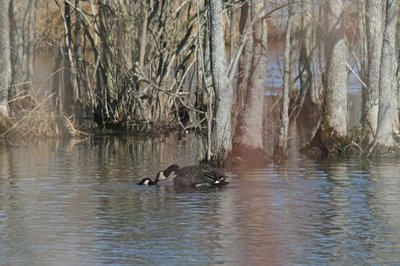 preening
preening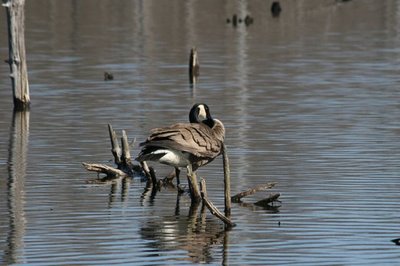
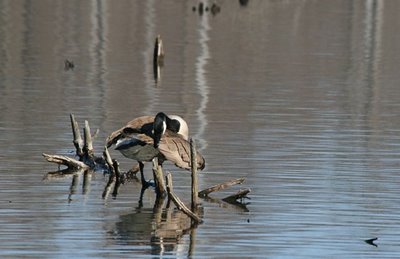
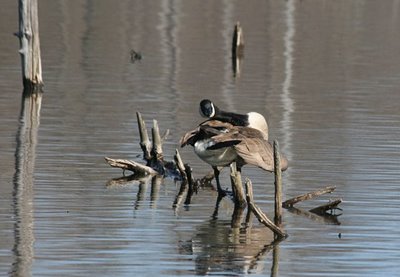 and making a general honking ruckus. One pair has claimed ownership of a part of the path near the bird feeder, and challenges passersby in a quiet way. I saw several toddlers try to pet this bird. Not recommended.
and making a general honking ruckus. One pair has claimed ownership of a part of the path near the bird feeder, and challenges passersby in a quiet way. I saw several toddlers try to pet this bird. Not recommended.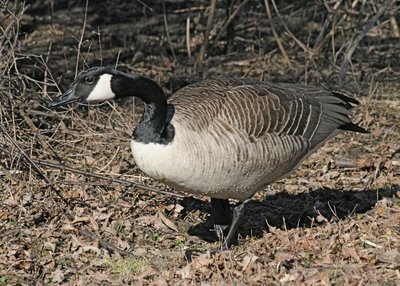 Does this goose look intelligent to you?
Does this goose look intelligent to you? 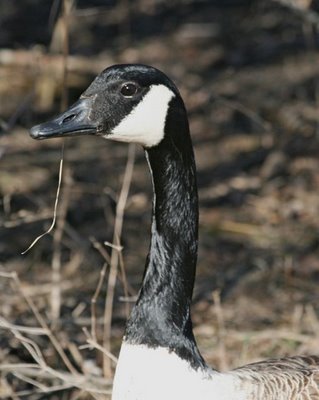 It does to me. There's really something going on in those eyes. It hisses and intimidates people who come too close. You don’t want a bite from that bony, serrated bill. There were a couple of geese with permanently injured wings, making a good living, mates by their side, at the pond. One bird acts as an unofficial greeter, hanging out right by the entry. It's neat to see birds the second you pull into the parking lot of the Lab.
It does to me. There's really something going on in those eyes. It hisses and intimidates people who come too close. You don’t want a bite from that bony, serrated bill. There were a couple of geese with permanently injured wings, making a good living, mates by their side, at the pond. One bird acts as an unofficial greeter, hanging out right by the entry. It's neat to see birds the second you pull into the parking lot of the Lab.Mallards kept bombing over and dropping in, and I played at photographing them, with some pretty cool results.
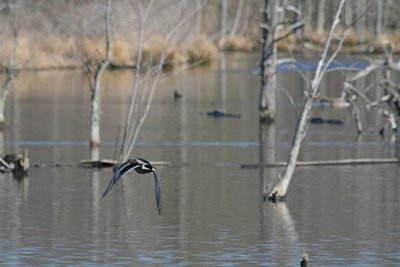 As a young bird painter, I devoured a book called Prairie Wings, by Edgar M. Queeney. Using the rudimentary black-and-white equipment of the time, he captured amazing photos of ducks in flight. If only I could go back in time and hand Mr. Queeney my little Digital Rebel. What fun he'd have.
As a young bird painter, I devoured a book called Prairie Wings, by Edgar M. Queeney. Using the rudimentary black-and-white equipment of the time, he captured amazing photos of ducks in flight. If only I could go back in time and hand Mr. Queeney my little Digital Rebel. What fun he'd have.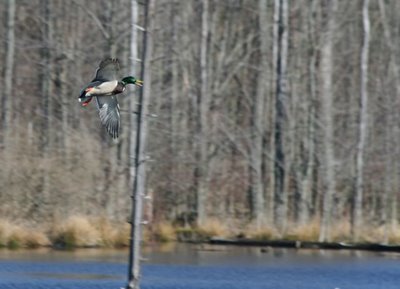
A mushmouse swam by a resting hooded merganser (the white spot directly back of the rat).
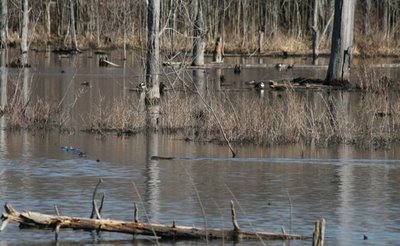
A pair of common mergansers.
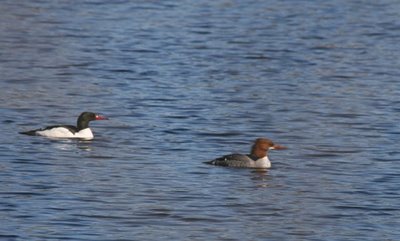 When they hauled out on a log, I could see the bulk of their bodies. They’re like icebergs.
When they hauled out on a log, I could see the bulk of their bodies. They’re like icebergs.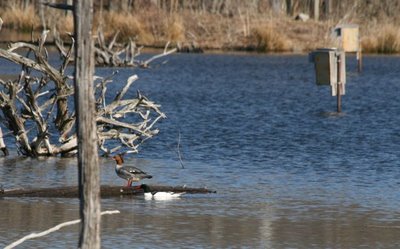 Note the wood duck nesting boxes, which common and hooded mergansers may also use. The place is set up for birds, and the resident geese know and exploit that.
Note the wood duck nesting boxes, which common and hooded mergansers may also use. The place is set up for birds, and the resident geese know and exploit that.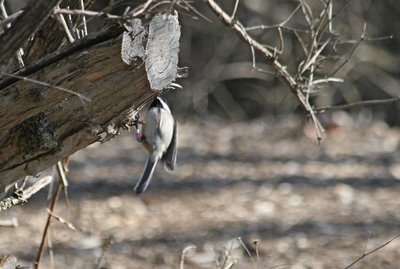 I had to chuckle when the black-capped chickadee I photographed turned out, on closer inspection, to be color-banded. This is the Lab of Ornithology, after all. Who knows what secrets these birds have revealed?
I had to chuckle when the black-capped chickadee I photographed turned out, on closer inspection, to be color-banded. This is the Lab of Ornithology, after all. Who knows what secrets these birds have revealed?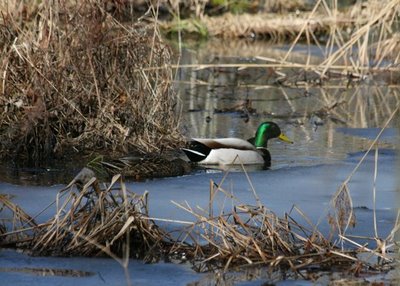 The incandescent glow of a mallard’s head. His mate hides in shadow.
The incandescent glow of a mallard’s head. His mate hides in shadow.I was stunned to see a big brown bat flying in daylight, dipping down to drink.
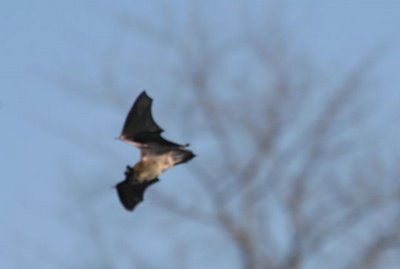 I never thought my photos would be acceptable, but they aren’t bad, considering that I was focusing manually, and the bat was dipping and diving like, well, a bat.
I never thought my photos would be acceptable, but they aren’t bad, considering that I was focusing manually, and the bat was dipping and diving like, well, a bat. 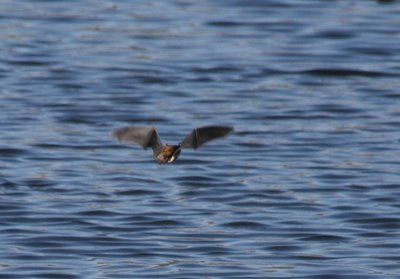 This is a really neat shot, and it's even, finally, in good focus.
This is a really neat shot, and it's even, finally, in good focus.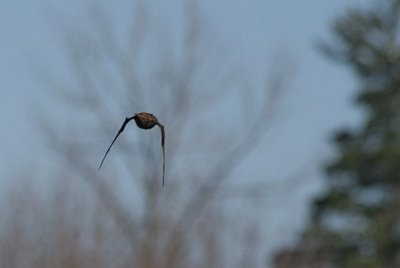 I hoped he wasn’t ill; bats all over the Northeast are turning up with “white-nose syndrome,” a disease of apparently fungal origin that is killing them by the thousands, and sending them out of their hibernacula much too early. Please be well and travel safely, brown bat.
I hoped he wasn’t ill; bats all over the Northeast are turning up with “white-nose syndrome,” a disease of apparently fungal origin that is killing them by the thousands, and sending them out of their hibernacula much too early. Please be well and travel safely, brown bat.This ends my sojurn at the Lab. The "Letters from Eden" show hangs through mid-July. Please check it out if you're in the area.
Labels: big brown bat, Canada geese, Common merganser, Cornell Lab of Ornithology, hooded merganser, mallards, muskrat, painted turtles, Sapsucker Woods






<< Home